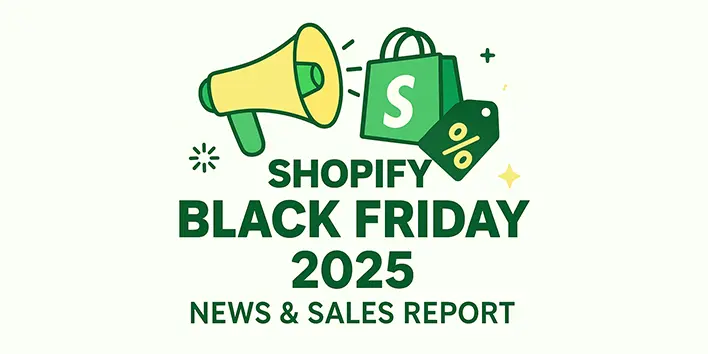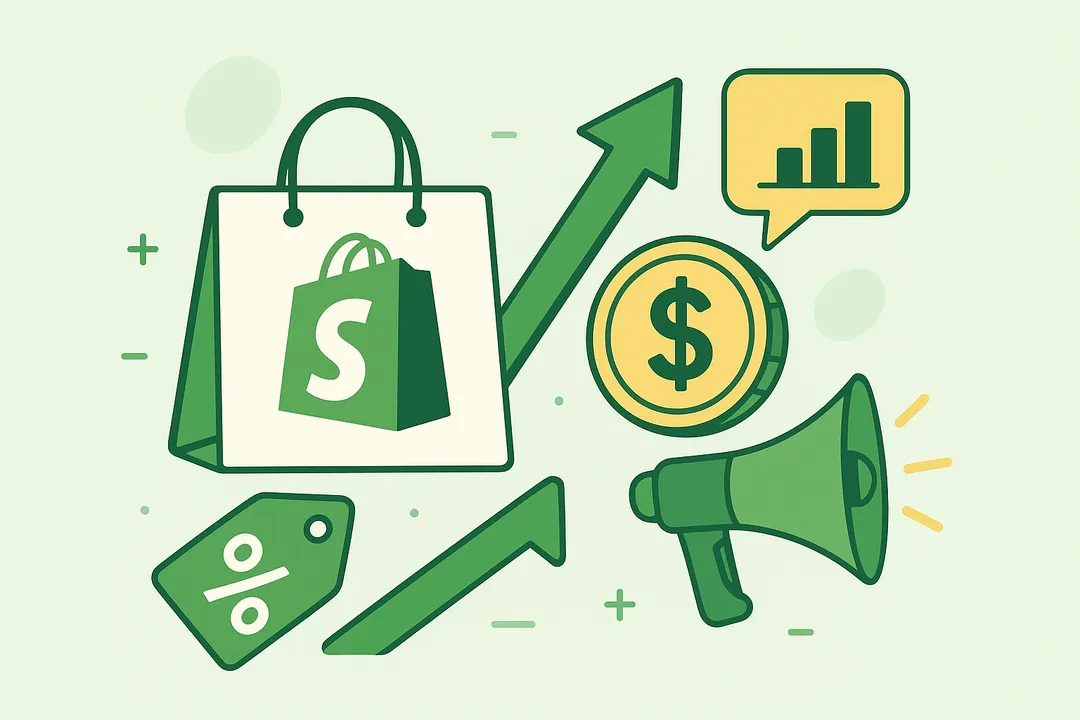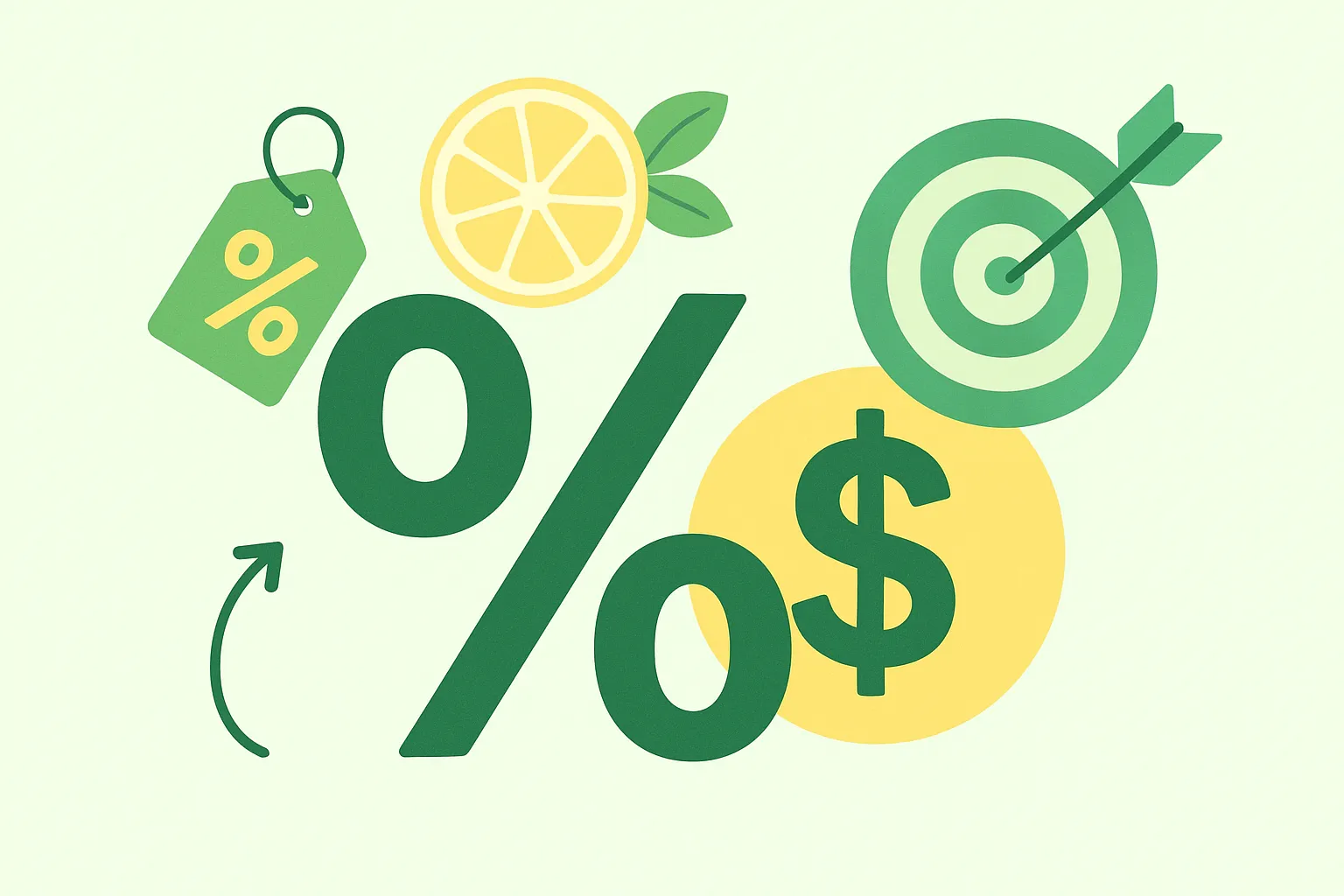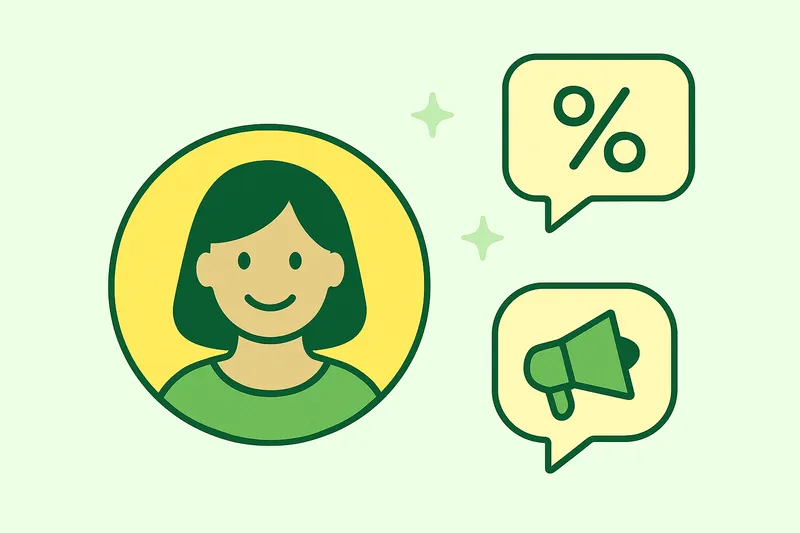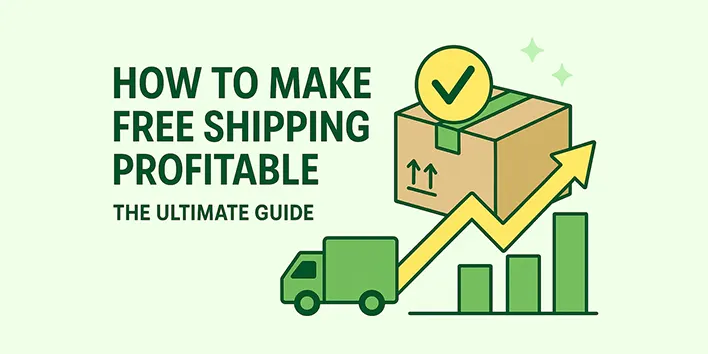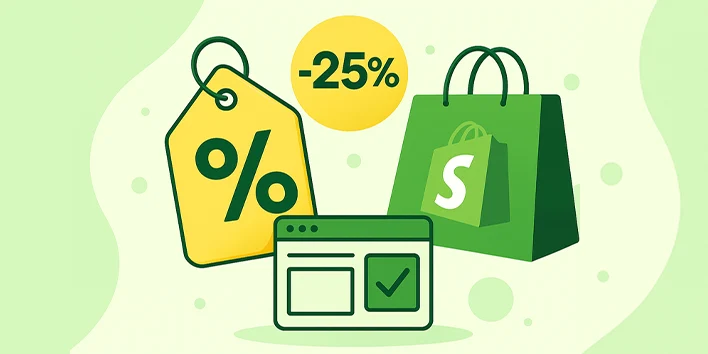Ever walked into a store, looked at a product, and thought, “Hmm… if I buy five, I get 20% off? That’s a deal!” That little mental math is exactly what quantity discounts are all about. It’s a pricing strategy that rewards buying more with paying less per unit.
This guide will explain all you need to know about quantity discounts: what they are and how they work, and how businesses smartly take advantage of them. We will provide you with practical examples, simple formulas, and a step-by-step guide to make your discount campaigns amazing, particularly when you have a Shopify store and work with flexible tools such as Discounty.
What Is Quantity Discount?

A quantity discount is a rather simple concept: it is when you offer the customers a discount on the price of a single item in case they purchase more of them. You may call it a volume discount, a bulk discount, or even tiered pricing, but it is the same thing: the more a customer buys, the less they pay per individual item. It is a sweet deal to all!
Suppose you have an online store that sells eco-friendly water bottles. You might sell one bottle at 10 dollars, or three bottles at only 8 dollars. That discount? That is a quantity discount at work.
This will be a win-win situation:
- Customers feel that they are getting a bargain.
- Sellers move more products in a single transaction (higher AOV—average order value).
And in a world where every click matters, that little discount nudge can make a big difference.
What is Quantity Discount in Marketing?
In marketing terms, it’s not just about numbers—it’s about persuasion. A well-placed quantity discount motivates customers to buy more, faster. It taps into buyer psychology by offering perceived savings. That’s why you see so many “Buy 2, Get 10% Off” banners during holiday sales.
What is Quantity Discount in Business?
In business, this strategy helps streamline inventory, increase revenue per transaction, and build stronger B2B or repeat customer relationships. If you run a Shopify store, setting up a smart quantity discount can turn window shoppers into loyal bulk buyers.
What is Quantity Discount in Accounting?
Accounting-wise, it affects the cost of goods sold (COGS), revenue recognition, and profit margins. Discounts are usually applied on the invoice level and recorded either at the point of sale or at the end of a defined delivery period, depending on the agreement.
What is Quantity Discount Example?
Let’s say your standard price for a tote bag is $12:
- 1–4 units: $12 each
- 5–9 units: $10 each
- 10+ units: $9 each
If a customer buys 10 bags, instead of paying $120, they pay $90—a $30 saving.
What Is Quantity Discount with Example?
Same example, but let’s add a little spice.
Imagine you’re running a campaign:
“Buy 5 or more, get each item for $2 less!”
Your customer’s cart:
- 6 bamboo toothbrushes (normally $6 each)
- Discount applied: $2 off per item
- Total: $24 instead of $36
This would give your shopper a feel-good factor and your store a good revenue.
Benefits and Drawbacks of Quantity Discounts
Quantity discounts are a clever device, provided you do not use them foolishly. So, what are the good, bad, and maybe risky? Let us go through them.
Benefits of Using Quantity Discounts
- Higher Sales Volume: More items per order = more revenue per transaction.
- Lower Inventory Costs: Bulk selling opens shelf space (virtual or actual), which is excellent when it comes to seasonal or perishable merchandise.
- Customer Retention: The more people feel like they are buying more than they paid, the more likely they are to stay.
- Economies of Scale: Whether you are producing or purchasing in large quantities, the discounts will assist in matching the demand with your supply chain benefits.
- Better AOV and UPT Metrics: You increase your average order value and units per transaction, two metrics that Shopify store owners just love to see on the rise.
Pro Tip: With a tool like Discounty, you can simply automate and customize tiered pricing so your spreadsheets or manual price editing are no longer a nightmare.
Drawbacks of Quantity Discounts
- Reduced Marginal Profit: Every item sold at a discount eats into your per-unit profit. If your cost per item is $5 and you're selling it at $6 with a discount, you’ve got just $1 of wiggle room.
- Customer Dependency on Discounts: Some shoppers might only buy when there’s a deal. Remove the offer? They might vanish like free samples at a trade show.
- Customer Inventory Concerns: Buyers may hesitate to purchase in bulk if they're concerned about storage space or product shelf life.
- Potential Brand Dilution: If you're a premium brand, offering constant quantity discounts could confuse your positioning.
Types of Quantity Discounts Explained
There’s more than one way to stack those savings. Here are the most common types:
1. Volume Discounts
Customers pay less when they buy more units. It’s straightforward: buy 100 mugs, pay $3 each instead of $4.
🪜 2. Tiered Discounts
Prices change based on the quantity range. Think:
- 1–4 items = $20 each
- 5–9 items = $18 each
- 10+ items = $15 each
3. BOGO (Buy One Get One)
This one’s everywhere. Buy one, get one free (or 50% off the second). Fun fact: it often feels better to customers than a straight percentage off.
4. Cumulative vs. Non-Cumulative Discounts
- Cumulative: Discounts add up over time. Good for loyalty programs.
- Non-Cumulative: Applies only to each individual purchase.
5. Step Discounts
Each tier has a fixed price, not a gradual one. Example:
- 1 coat = $50
- 5 coats = $225
- 10 coats = $400
Simple and motivating.
Business Use Cases: When and Why Companies Offer Quantity Discounts
When and why to use quantity discounts is a critical difference between a successful pricing strategy and one that destroys profit margins. To see how companies employ this strategy to propel performance, let us take a closer examination.
Common Scenarios for Using Quantity Discounts
- Clearing Out Old or Seasonal Inventory: In the case of products that are in danger of becoming out of season or obsolete, a discount encourages customers to purchase more of the product. An example would be a clothing store that would sell summer swimwear in bulk at the end of the season to make room in the store to stock new items.
- Boosting Sales Volume: A company may need to increase the total amount of revenue or the number of units sold during a transaction. In this case, providing a promotion on purchases in large quantities will facilitate the sale of more of a given product. This is particularly helpful in e-commerce because shipping expenses may be absorbed in bulk orders.
- Encouraging Loyalty and Repeat Purchases: B2B companies frequently utilize cumulative quantity reduction to create longer-term loyalty. As another example, a hardware supplier may offer progressively discounted prices for a set number of orders placed within a quarter or fiscal year by a builder.
- Launching New Products: When you're rolling out a new product, quantity discounts are a fantastic way to generate early buzz. They encourage customers to buy more than one, helping you gather those initial reviews and get people talking.
- Wholesale or Business-to-Business (B2B) Sales: For wholesale and B2B sales, quantity discounts are pretty much expected. Buyers in these markets look for pricing incentives on large orders, so offering them is just part of doing business effectively.
How Quantity Discounts Affect Profitability
Quantity discounts can be beneficial and a detriment to your bottom line. Given the right execution, the increased sales volume can counter the decreased unit profit. But when your cost structure is not well thought out, you may end up selling at below profitability points.
Pro Tips for Choosing the Right Time to Run Quantity Discount Campaigns
- Examine customer purchasing trends and seasonality.
- Take a look at your inventory position are there goods that should be moved?
- Examine your existing margins- you cannot afford to offer discounts that will leave you in a loss.
- Keep track of what competitors are doing-are they being aggressive in their discounts? It may be time to do the same.
Quantity Discount vs. Linear Pricing: A Comparative Analysis
Now let’s compare quantity discounts to another common pricing method: linear pricing.
What is Linear Pricing?
Linear pricing means that every single item costs the same, no matter how many you decide to pick up.
If a t-shirt is priced at $20, it remains $20 whether a customer buys one or a dozen. There are no bulk discounts; the pricing is consistent, predictable, and straightforward.
Which One Works Better for Your Business Model?
It is not a one-size-fits-all question. Linear pricing is usually the most logical when you are selling quality or limited goods, and you want to maintain that exclusive brand image.
However, when you are in e-commerce and want to increase your average order value or sell out stock quickly, quantity discounts can be extremely effective.
How Does a Quantity Discount Campaign Work?
Let's break it down step by step.
Basic Structure of a Quantity Discount Model
At its heart, a quantity discount campaign simply applies price breaks based on the number of units purchased.
The formula looks something like this:
Discounted Price per Unit = (Total price after discount) / (Total number of units purchased)
Example: If you sell 100 items for $450, your unit cost is:
$450 / 100 = $4.50 per unit (instead of $5 regular price)
This encourages buyers to purchase larger quantities to get a better deal.
Quantity Discount Model Example with Solution
Let’s say you run a Shopify store that sells scented candles:
- Regular price: $15 each
- Buy 3–5: $13 each
- Buy 6+: $12 each
If a customer buys 7 candles: 7 x $12 = $84 total
Without the discount: 7 x $15 = $105
Savings: $21
That’s an attractive incentive for shoppers, especially during key seasons like holidays or gift-buying periods.
Best Practices for Running a Successful Quantity Discount Campaign
You are considering a quantity discount campaign then? That's smart! However, this is the thing: it is much more than simply putting a sticker with the words Buy More, Save More on your products. In order to actually make a difference and actually see your sales go up, you are going to want to follow a few key best practices. It is not about giving out deals here and there, but it is about being smart and tactical!
Step-by-Step Guide to Planning Your Campaign

- Understand Your Costs: First, have a good knowledge of your costs. Analyze your fixed and variable costs in detail before you decide to give a discount so that you know your break-even point. This is essential in determining the lowest price possible and still making profits.
- Analyze Customer Buying Behavior: Next up, put on your detective hat and look at your sales data. How much do your customers purchase? This is gold insight since it enables you to offer discounts based on real buying behavior.
- Study Competitors: See how your competitors in the market are using quantity discounts. Do they have more aggressive prices? Less? This can assist you in positioning your offers.
- Define Clear Goals: What do you want to achieve?
- Move aging inventory?
- Increase average order value?
- Encourage repeat purchases?
- Build loyalty among your best customers?
- Set Up Your Discount Structure: Choose the type of discount (volume, tiered, step, BOGO) and make sure it aligns with your goals.
- Test and Optimize: Start small and test different versions of your discount campaigns. Analyze which offers perform best and adjust your strategy.
- Promote It Effectively: Announce the discount on your homepage, product pages, email campaigns, and social media. Make sure it’s visible and enticing.
Crafting Effective Discount Tiers
- Make the structure simple and understandable.
- Show the savings clearly on your product pages.
- use round numbers as much as possible (it will allow buyers to make a decision quicker).
Choosing the Right Messaging & Promotion Channels
- Highlight the deal with sales badges and clear tiered pricing tables (features you can easily add with Discounty).
- Add countdown timers for urgency.
- Send email and retargeting advertisements to remind former customers of current offers.
Example Strategies to Boost Results
- Stacked Discounts: Try combining quantity discounts with things like free shipping thresholds.
- Limited Time Offers: Include a countdown to make the customers buy faster.
- VIP Discounts: Reward your most valuable customers with exclusive quantity discounts.
Common Mistakes to Avoid
- Offering discounts that cut too deep into profit margins.
- Making discount structures too confusing.
- Failing to promote the campaign properly.
- Forgetting to update discount settings as inventory changes.
How Discounty Helps You Launch Smarter Quantity Discount Campaigns
Running quantity discounts on Shopify can be tricky if you’re relying on manual price edits or complex scripts. That’s where a tool like Discounty makes life a lot easier.
Why Use Discounty for Shopify Stores?
With Discounty, you can:
- Set up Buy X, Get Y or tiered pricing in just a few clicks.
- Customize discount displays (badges, tables) to fit your store’s branding.
- Automatically apply discounts without needing additional discount codes.
This means less time fiddling with spreadsheets and more time running your business.
Discounty Features Tailored for Quantity Discount Success
- Auto-update campaigns: As you add new products or change inventory, your discounts stay current.
- Multiple discount tiers: Easily set "Buy 2, Get 10% Off" and "Buy 3, Get 20% Off" types of deals.
- Campaign combinations: Run more than one type of discount on a single product when required.
- Expert support: You can receive quick assistance in case you want to personalize badges, rules, or promotions.
In case you have a Shopify store and you need to run smarter, faster, and more effective quantity discount campaigns, Discounty provides you with the freedom to do so.
Conclusion: Smarter Quantity Discounts = Better Sales and Happier Customers
What then is a quantity discount? It is just one of the most convenient, most effective methods of making customers purchase more and at the same time, getting them a great deal. Regardless of whether you operate an e-commerce shop or a wholesale company, the knowledge of when and how to apply these discounts can dramatically increase sales, enhance the rate of inventory turnover, and establish closer relationships with customers.
However, as with any good tool, it is most effective when you use it sensibly. Always know what you are spending, see what your customers are purchasing and establish campaigns that really reflect what you want. Discount management tools such as Discounty will help you manage your discount strategy without any headaches.
Ready to see results? Start planning your next quantity discount campaign today and get ready for those bigger orders!


